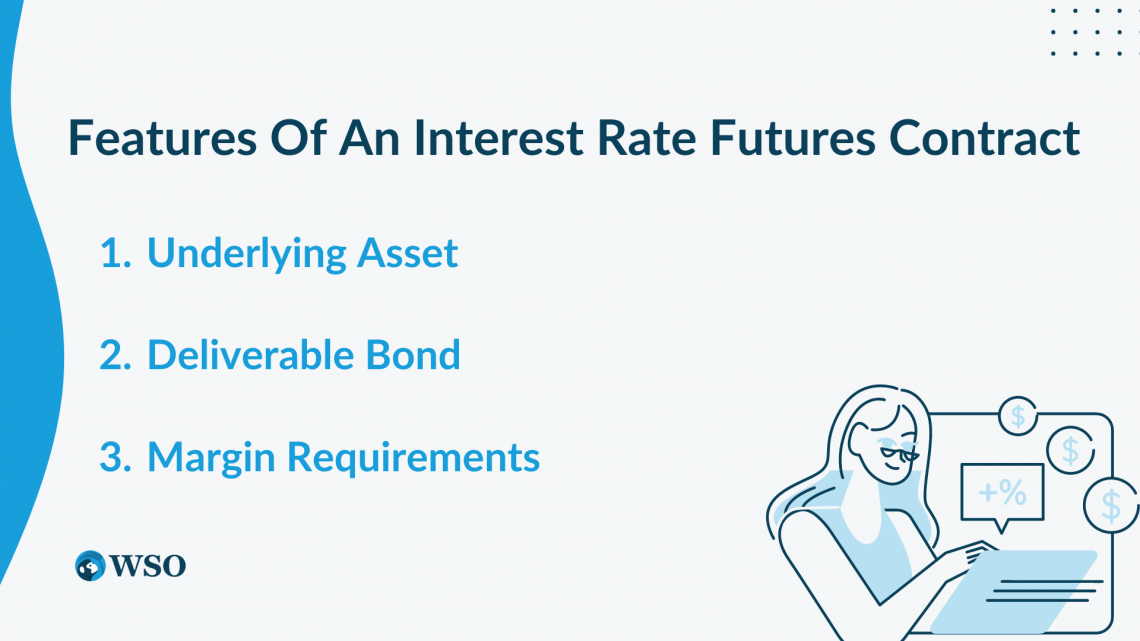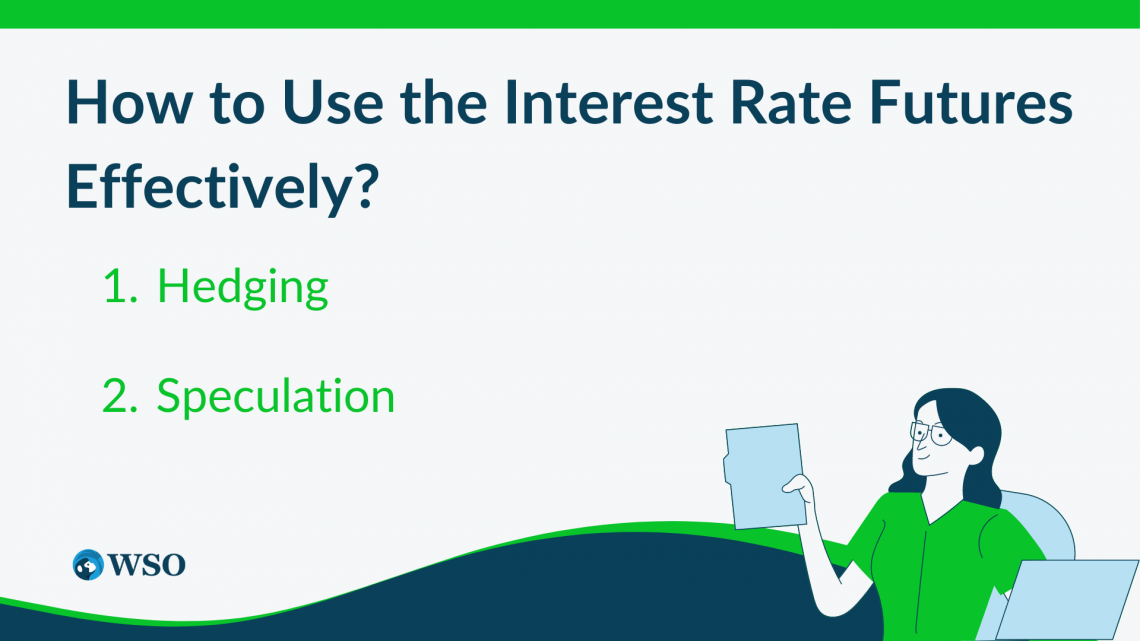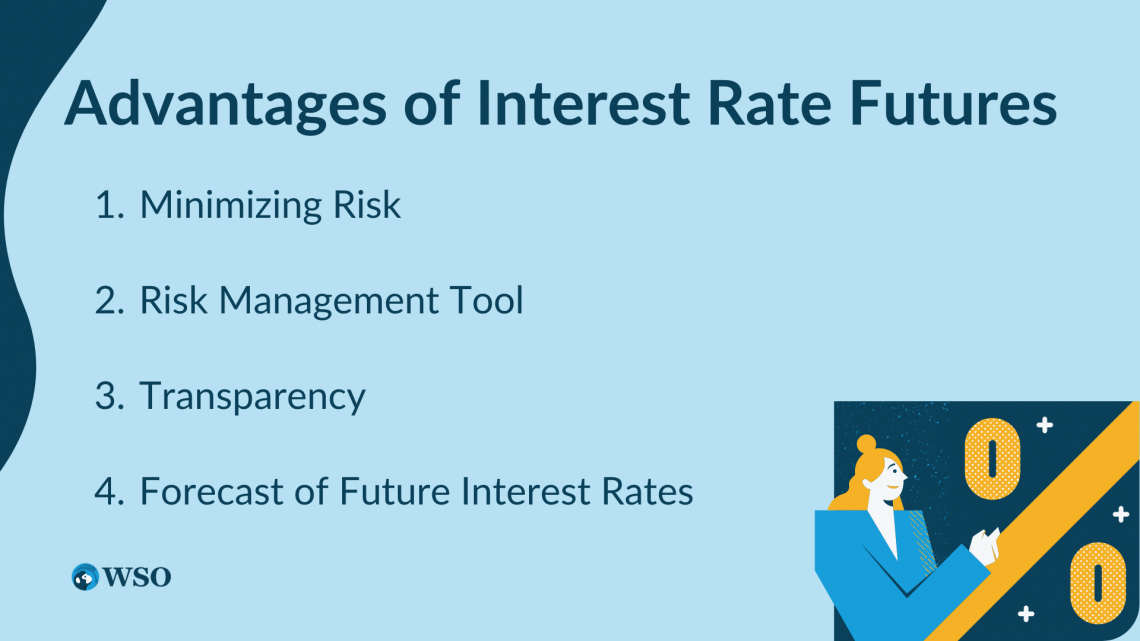Interest Rate Futures
Interest rate futures are derivative contracts based on an underlying interest rate, used for hedging or speculating on future interest rate movements.
Interest Rate Futures or IRFs are a derivative instrument used to hedge potential changes in the interest rate. An instrument's price sensitivity to any change in the interest rate is referred to as the “interest rate risk”.

Any slight change in the interest rate could have a catastrophic impact on a fixed-income portfolio. Hence, the value of an instrument decreases as the interest rate rises, and vice versa.
Government bills, bonds, and other treasury instruments pay a specific interest rate. This rate is variable (not a fixed rate) and could fluctuate over time. The Federal Reserve charges a base rate which banks use to levy on their loans and deposits.
The lowest-ever Fed rate of zero percent was charged during both the 2008 Financial Crisis and 2020 Covid-19 Pandemic. Having a zero percent interest rate indicates a recession, and it usually spreads globally as many currencies are pegged around the dollar.
To hedge interest rates, economists and financial managers have developed a concept where market participants can choose to lock in their future desirable interest rates. This choice to lock future interest rates are facilitated using derivative contracts like forwards, futures, or options.

A futures contract is an agreement between the buyer and the seller to purchase an instrument at a specific date on a specified price. A financial device can be deemed an underlying security only if it bears some market risk.
Financial assets, like bonds, for example, are risky, and so are qualified to be an underlying security. Bonds are risky instruments as their prices are sensitive to the market interest rate.
Thus, Interest Rate Futures (IRFs) are commonly used by market participants to lock in their desired rate and hedge their risk exposure.
Key Takeaways
- Interest rate futures hedge the interest rate risk by contracting a derivative with an interest-paying instrument as an underlying security.
- Treasury bills (T-Bills), bonds, and Euro-dollar bonds are usually used as an underlying security in the U.S. futures market.
- When the interest rate increases, prices of bonds and futures decrease. The investor that takes advantage of a rise in interest rates is said to be going short.
- When the interest rate decreases, prices of bonds and futures increase. Investors that take advantage of the downward interest rate are said to be going long.
- The futures market consists of Hedgers and Speculators. Hedgers take positions to minimize risk, while Speculators take positions based on their perception of future interest rates.
What Is An Interest Rate Future Contract?
IRFs (Interest Rate Futures) are derivative contracts with an interest-paying bond as an underlying security. A buyer agrees to purchase a security at a pre-agreed future interest rate from a seller on a predetermined date.

The interest-paying debt instrument could either be a treasury bill (T-bill) or a bond. Debt obligations from the U.S. government that mature within a year are T-bills. Treasury bonds, on the other hand, have maturity timelines between 10-30+ years.
Treasury bills are usually called short-term money market instruments. Its maturity could either be quoted by the day or week. For example, there could be a 91-day T-bill or a 4-week T-bill. A T-bill cannot have a maturity of less than < 4 weeks or greater than > 52 weeks.
Another popular instrument used in the U.S. is the Eurodollar futures. The interest rate levied on these contracts is the LIBOR rate and is used for offshore deposits. The three-month Eurodollar future is the most popular instrument.

Market participants that engage in the trade of such transactions are Hedgers and Speculators. Both these participants primarily deal to secure future benefits by taking advantage of arbitrage opportunities with current prices.
Futures contracts are standardized, so they can only be traded on registered exchanges (NASDAQ, NYSE, etc.). This ensures that all transactions are regulated and that all market participants abide by the same trading rules.
The CME Group (Chicago Mercantile Exchange) supervises most derivative transactions in the United States as it is the most popular exchange platform. The CME supervises all trades for short-term money market instruments.
Another division is the Chicago Board Of Trade (CBOT) which provides a trading platform primarily for treasury bonds.
Interpreting Quotations
Every country quotes its futures contracts differently. In a futures quote, there are day conventions and price quotations.

Day conventions refer to the number of days the interest is earned. In the U.S., the most common day conventions are 30/360, actual/360, and actual/actual.
A year in finance is usually calculated using 360 instead of 365. The purpose of this is to simplify and standardize the number of days.
Usually, short-term money market instruments use the actual/360 convention, while long-term money market instruments use the actual/actual convention.
The price quote for a T-bill differs from that for a Treasury Bond. For T-bills, the price quote is usually the discount or interest rate.

For example, the face value of a 91-day T-bill is $1,000, and the price is given as $5. This means the investor can gain 5% interest on 91 days over 360 days.
The interest is calculated as the interest rate multiplied by the day convention.
0.05 interest rate * $1,000 * (91/360) = $12.64
On the other hand, the U.S. Treasury bonds are quoted as two separate parts. The first number is the bond's dollar price, while the second number is a fraction of a dollar by 32.
The quotes can be given as $98-07 for a $100 face-value bond. Instead of a hash, the numbers can be separated by a colon or a decimal, i.e., $98:07 or $98.07.
The price for that bond is calculated as follows.
Price = 98 + (07 / 32) = $99.218
Mechanics Of An Interest Rate Future Transaction
All futures transactions are standardized on exchanges where both the buyer and seller must be registered traders. Before initiating future transactions, both parties must have an initial minimum balance in their respective accounts, known as the initial margin requirement.

They must always maintain that balance to have a trading capacity. If either party cannot maintain the balance, they will be alerted to replenish it to the initial margin. These alerts are known as margin calls.
Once the margin requirements are met, an individual can enter a futures contract. The party that benefits when there is an increase in the asset price, or decrease in the interest rate, is known to be taking a long position.
An investor who shorts or takes a short position on assets takes advantage of a downward trend in the asset value, or an increase in interest rates.
Increasing interest rates would require the buyer to compensate the seller for those benefits. The seller compensates the buyer when the interest rate decreases, by contrast.
Hedgers and Speculators observe the current prices and place their bets according to their future expectations. Thus, these investors can profit from such transactions by forecasting future interest rates.
Note
An essential characteristic of a futures contract is the delivery of the security. The buyer can either receive the security or trade it in for cash. The seller has no say in the delivery and works at the buyer's discretion.
In the first scenario, the seller will transfer the security ownership to the buyer. The buyer holds the bond and receives its future economic benefits (i.e., the interest). The seller delivers the instrument that fits the buyer's expectation as stated in their contract.
In the second scenario, if the buyer prefers, the seller may provide the buyer with cash compensation in place of a trade-in. For futures contracts, the buyer need not worry about credit risk as all transactions are standardized with a clearing house taking a guarantee.
Features Of An Interest Rate Futures Contract
In a standardized contract, the following terms are commonly mentioned that specify the trade terms.

The underlying security must bear some risk. For IRFs, the underlying is a bond that is government issued. The asset could be actual or notional.
A notional bond mirrors an interest-bearing bond's specifications but, in actuality, does not exist. By issuing these contracts, more market participation can be observed as the seller is not obligated to own the bond.
For notional bonds, as soon as the futures contract expires (since the positions were not closed before the maturity date), the seller must locate a bond with similar characteristics as the one mentioned in the futures contract.
2. Deliverable Bond
A deliverable bond relates to the size of a contract, which specifies the quantity and the specifications of a bond to be delivered. It is the bond that the seller must transfer to the buyer upon maturity.

The seller's duty differs when the contract mentions delivering a notional bond. In that case, the seller is given various options, known as a deliverable basket, that includes bonds with different coupon rates and maturities.
The ultimate choice remains with the seller to select the deliverable bond. While choosing their preference, the seller would select the Cheapest-to-deliver bond that can be found using a conversion factor.
The conversion factor is used when there is an underlying mismatch, i.e., the contract-specified asset and the deliverable bond have different features. Using the conversion factor, the ultimate choice would fit the buyer's and seller's expectations, resulting in a fair trade.
Note
For more information on the U.S. Treasury conversion factors from the CME Group, click here.
3. Margin Requirements
Futures contracts specify the initial and maintenance margin limits. A contract could include an initial margin equivalent to 1% of a contract's notional value. If a contract size is $50,000, the initial margin would be $500 ($50,000 * 1%).
Once the initial margin is satisfied, the contract initiates. After that, a maintenance margin requirement must always be met. The minimum balance should always be present in the account. It is lower than the initial margin.
How to Use the Interest Rate Futures Effectively?
Market participants found that Hedgers and Speculators are usually in a futures market. They contain risk-averse characteristics and use IRFs to reduce interest rate risk and generate profits.

1. Hedging
Hedging is the act of equalizing the risk of an instrument by deploying a security that duplicates its risk, thereby trimming the overall portfolio risk. Let us understand how to utilize IRFs to hedge the interest rate risk properly.
For example, an investor forecasts that the interest rates will increase and can adversely affect their portfolio value. In this case, the investor must adopt a strategy that involves taking a short position on the IRF.
This strategy would be designed to counterbalance the risk as the investor benefits when the interest rate would increase. If the investor had taken a position large enough to offset the profits gained with the accumulated portfolio losses, their exposed risk would be null.
On the other hand, if the investor believed that the interest rate would decrease, they would hold a long position by buying a futures contract.
Thus, by hedging, the investor implements an accurate risk management technique. Although hedging is not an easy technique, it is argued that the value after hedging is more than the value without a hedge.
2. Speculation
An investor may speculate if they form an idea for a futures rate direction (upside or downside). By speculating, an investor simply trades on the rates.

A speculative trader would take long positions if they believe interest rates would decrease. In comparison, a speculative trader would take a short position if they believe the interest rates would increase.
There can be a rationale behind their assumption. However, it is not used to minimize any risk like in hedging.
Additionally, trading on margins increases the leverage for the investor, thereby increasing its popularity amongst traders.
Most trades of this sort are closed before the expiration date so that the investor does not have to receive or deliver the underlying bond. It is usually settled with cash.
Advantages of Interest Rate Futures
IRFs have large daily volumes indicating that many market participants prefer to indulge in this derivative instrument. Futures contracts offer high liquidity and lower transaction costs. The benefits, apart from that, are mentioned below.

1. Minimizing Risk
Market participants use IRFs to manage their risk. However, one must remember that using this instrument does not eliminate every inherent risk of a fixed-income security. The security can still be a victim of price, inflation, liquidity, or market risk.
The bottom line of investing is to make profits by undertaking minimal risk. The IRFs support this stance by eliminating the most prominent risk affecting a bond – changes in the interest rate.
Furthermore, it reduces the credit risk by removing the possibility that a counterparty could default. The credit risk is effectively reduced by standardizing all transactions through exchanges and enforcing margin requirements.
2. Risk Management Tool
As IRFs are used to hedge the price of an underlying security, investors are able to manage their risk by offsetting their losses with any gains from futures. This eliminates the price risk due to the change in interest rates.
3. Transparency
As all trades are made through an exchange, and all contracts are standardized, it creates a transparent trading relationship between the buyer and the seller.
4. Forecast of Future Interest Rates
By trading based on the perception of future rates, one can understand the market sentiment for future interest rates. When investors believe that the interest rates will fall, they take long positions.
In this way, investors can predict which direction interest rates are moving based on the kinds of positions other participants have taken.




or Want to Sign up with your social account?